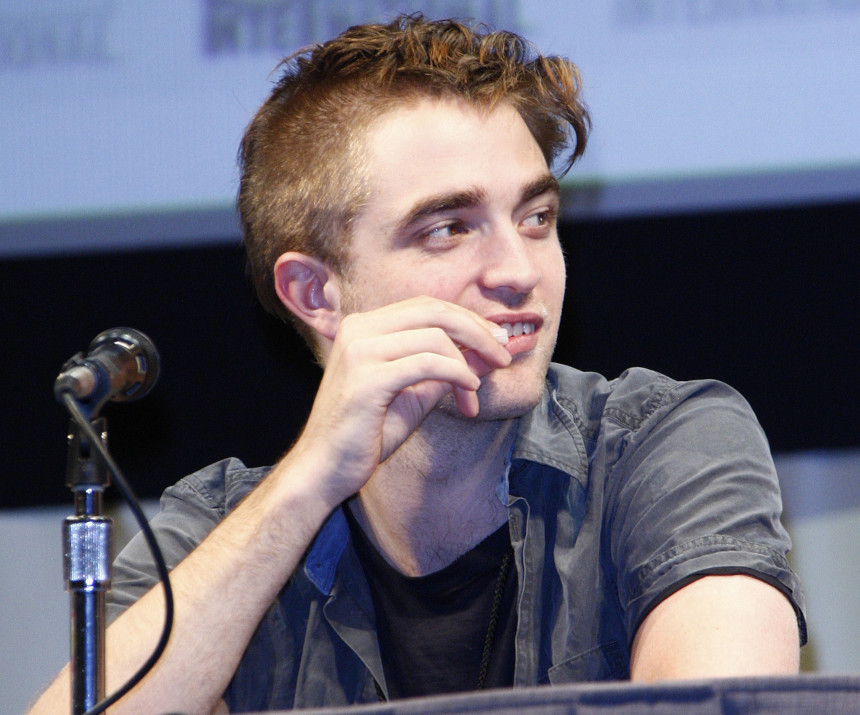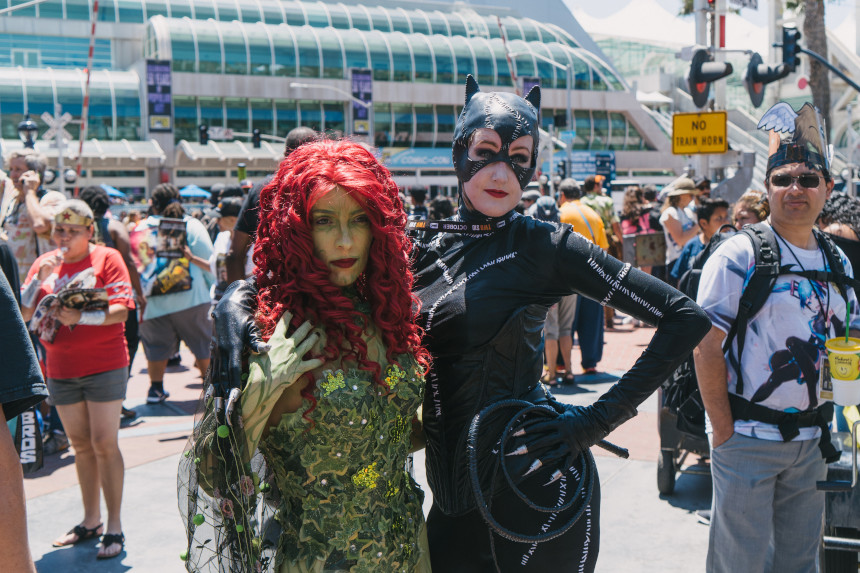“Hey, it’s the second-best writer at Newsarama.”
To her credit, Vaneta did not hit me. She turned around, saw it was me, and gave me a hug. Then she hit me (okay, just in the shoulder). We were on the crowded main floor of the 2007 San Diego Comic-Con. We talked briefly about what we were covering; I was pulling double-duty, working for both Newsarama.com and as an associate editor for Fangoria Comics, a spin-off of the vaunted horror magazine. I’d spent so much time working on Fangoria stuff and making connections to get there from the Midwest that I hadn’t really paid attention to other things that were going on, aside from what I’d be assigned to cover.
Then Vaneta said, “Downey’s here.”
That surprised me a little. We all knew that Robert Downey Jr. had been cast as Tony Stark in the forthcoming Iron Man, but I was still a little surprised that he would hit the show. Sure, other actors and directors had done the same thing in previous years (in fact, Robert Rodriguez was there that year for his and Quentin Tarantino’s Grindhouse), but this seemed different. It was indicative of the changing perception of what SDCC was, both to the entertainment industry and the outside world.
Flash-forward to today: Comic-Con International: San Diego marked its 50th year in 2020. What should have been a grand celebration instead had to shift online under the specter of COVID-19. Nevertheless, the fact that the event adapted and continued is a tribute to its pioneering spirit and its ability to change, morphing from a one-day show called the Golden State Comic Book Convention in March of 1970 before trying out a three-day format 50 years ago this week.

The original show was founded by Shel Dorf, Ken Krueger, Mike Towry, Richard Alf, Bob Sourk, Greg Bear, and Barry Alfonso. Dorf had run some of the first comic book conventions in the 1960s in Detroit before moving to California. The March 21, 1970, Golden State Comic-Minicon was Dorf’s notion of a test flight for a larger show. The Golden State Comic-Con ran from August 1 to 3, 1970. Total attendance was around 300 people.
As the show grew, it shifted through different venues and underwent a series of name changes. It was San Diego’s West Coast Comic Convention in 1972 before becoming San Diego Comic-Con in 1973. Since 1995, the event has been properly called Comic-Con International: San Diego, though many still refer to it as San Diego Comic-Con, SDCC, or, simply, San Diego. (If you say San Diego in a comic book store, they know you aren’t talking about the Padres.) The event itself is organized as a non-profit, and owns registered trademarks on the phrases “Comic-Con” and “Comic-Con International,” which has led to several other shows changing their names in the past several years (with “Comic Convention” or “Comic Fest” being the most frequent substitutions).
From the outset, the founders intended the show to be more than just comics. Creators and fans of science fiction and fantasy literature and film were welcomed from the beginning. In fact, co-founder Bear is an award-winning genre author of more than 50 books. In 1976, Roy Thomas and Howard Chaykin went to the show to promote a new Marvel comic that they were doing, an adaptation of a film that was due out in 1977. They only had a few stills to show to a tiny crowd. Still, it did make the attendees excited about that new movie. It was called Star Wars.
Over the years, as comic shops proliferated, the business boomed, and books like The Uncanny X-Men began to move insane numbers in the 1980s, San Diego got bigger and bigger. What was once an event that attracted 300 people began to attract thousands, then tens of thousands, then one hundred thousand. The mix of fans, creators, exhibiting companies, cosplayers, and occasional film and TV personalities made a potent brew. For years, the show has hosted both the Inkpot Awards, given to outstanding contributors in the genre fields, and the Will Eisner Awards, which are essentially the Oscars of comics. Yes, there were and are other fine conventions around the country, like North Carolina’s Heroes Con or Mid-Ohio Con or New York Comic Con or Chicago’s C2E2, but there has only ever been one San Diego.

I’d attended or worked at other cons before, but when I got the chance to go to San Diego, it was different. I felt like I was commuting to the beating heart of the pop culture universe. It was a veritable sea of people (attendance was reputedly 125,000 in 2007). It took almost thirty minutes to walk from one side of the main room to the other, and that’s if you didn’t stop. Fangoria hosted actor Michael Madsen (Reservoir Dogs, Kill Bill, etc.) for a signing that year, and I took one of his sons out on the show floor to shop for Star Wars toys. We went to parties for Troma Films and Rue Morgue magazine. A couple of Fango friends and I caught a ride with Ken Foree, the star of George Romero’s horror classic Dawn of the Dead. We exchanged pleasantries in a hotel lobby with Buffy the Vampire Slayer creator Joss Whedon (ironic considering that the MCU was launching that weekend and he’d be back in a few years, announced by Downey as the writer and director of Avengers). It was most certainly surreal.
The unique thing about my SDCC experience is that there was almost nothing unique about my experience. The show is a bright, candy-colored circus for almost everyone who goes. Yes, conventions in general have struggled with issues related to cosplayer safety, and San Diego in particular can be a nightmare when it comes to securing hotel rooms and admission, but the fact remains that as an entity, there’s not much that’s quite like it.

In 2008, which I did not attend, the Twilight Saga made a big splash. A panel for the second film, The Twilight Saga: New Moon crammed 6,000 attendees to see clips from the film and a panel with the cast. Over the next few years, attending fans of that series increased in numbers, leading to grumbling in some quarters about a perceived dilution of the show. Really, though, the disgruntlement seemed to be based on two things: the clogged exhibit hall areas caused by fans trying to jockey for position many hours ahead of the panel (which, okay, fair) and the fact that Twilight appealed primarily to women and girls (absolutely not fair at all). The success of Twilight at SDCC actually proved that the show could be a bigger tent and welcome fans of diverse genres and properties, as well as diverse fans.

It might be fair for hardcore comic fans to feel a bit like the comics themselves have been marginalized at the show. The biggest reserves of press coverage focus on movie announcements and actor appearances. It’s a hard place to launch a new comic, as a vacuum of overwhelming P.R. tends to swallow smaller pieces of information. But looking too hard in that direction is a denial of the success that the show has become. That stuff that you liked, that stuff that you might have been made fun of for loving? Lots and lots of people like that stuff now, too. Celebrate that, instead of being put off by the fact that more and different people are at the show.
As you know, crowding wasn’t the problem this year. SDCC mounted “Comic-Con@Home,” a virtual effort with remote panels, online exclusive products, watch parties, and more. It was a valiant effort that contained some great virtual events, but of course, not the same. If all goes well in the world, it’s possible that Comic-Con International: San Diego could return next year. The important thing about this show is the same thing that is important about GenCon or any other celebration of fandom: it’s cool to love what you love. And it’s cool that other people get to, too.
Featured image: Sarah Mertan / Shutterstock
Become a Saturday Evening Post member and enjoy unlimited access. Subscribe now



